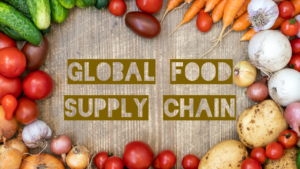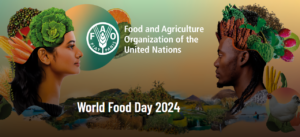Back in June 2006, I wrote a post that discussed, in part, the fact that work had begun on a huge vault on the Norwegian island of Svalbard to house seeds from the world’s food producing plants [From Somalia to Svalbard]. In that post, I noted that although there are thousands of varieties of seeds for most of mankind’s favorite crops, the number of those crops is relatively small. In his book Guns, Germs, and Steel, Jared Diamond notes that five of the world’s leading crops (wheat, corn, rice, barley, and sorghum) account for “over half of all calories consumed by humans.” Promoters of the seed vault believe that their project will protect the world from a natural or man-made catastrophe that could devastate these crops.
Nearly two years later, the New York Times reports that the vault is open for business [“Near Arctic, Seed Vault Is a Fort Knox of Food,” by Elisabeth Rosenthal, 29 February 2008]. The purpose behind the vault, of course, is to be prepared for the unexpected destruction of food plant species.
“With plant species disappearing at an alarming rate, scientists and governments are creating a global network of plant banks to store seeds and sprouts, precious genetic resources that may be needed for man to adapt the world’s food supply to climate change.”
The vault at Svalbard looks to be the mother of all seed banks.
“[Recently] the flagship of that effort, the Global Seed Vault near [Longyearbyen, Norway], received its first seeds, millions of them. Bored into the middle of a frozen Arctoc mountain topped with snow, the vault’s goal is to store and protect samples of every type of seed from every seed collection in the world. As of Thursday, thousands of neatly stacked and labeled gray boxes of seeds — peas from Nigeria, corn from Mexico — reside in this glazed cavelike structure, forming a sort of backup hard drive, in case natural disasters or human errors erase the seeds from the outside world.”
Operators of the seed bank take their task very seriously — as seriously as military personnel who man ICBM sites deep underground.
“Descending almost 500 feet under the permafrost, the entrance tunnel to the seed vault is designed to withstand bomb blasts and earthquakes. An automated digital monitoring system controls temperature and provides security akin to a missile silo or Fort Knox. No one person has all the codes for entrance.”
Nowadays you often hear non-governmental organizations talk about food security; by which they mean that people in any given area have a secure means of growing, harvesting, and distributing food crops. The seed banks are part of a global food security effort — a means of making the human race more resilient.
“The Global Vault is part of a broader effort to gather and systematize information about plants and their genes, which climate change experts say may indeed prove more valuable than gold. In Leuven, Belgium, scientists are scouring the world for banana samples and preserving their shoots in liquid nitrogen before they become extinct. A similar effort is under way in France on coffee plants. A number of plants, most from the tropics, do not produce seeds that can be stored. For years, a hodgepodge network of seed banks has been amassing seed and shoot collections in a haphazard manner. Labs in Mexico banked corn species. Those in Nigeria banked cassava. Now these scattershot efforts are being urgently consolidated and systematized, in part because of better technology to preserve plant genes and in part because of the rising alarm about climate change and its impact on world food production.”
Rosenthal reports that operators of the seed bank, a nonprofit group called the Global Crop Diversity Trust, started thinking about the seed vault following the disaster that befell the U.S. Gulf states when hurricane Katrina made landfall. It wasn’t just the destruction that took place there, but also the general unpreparedness of those who were affected by the storm. There was always a probability that the coast would be hit by a hurricane of large magnitude and yet too few took the risk seriously. Personnel at the Global Crop Diversity Trust believe that biodiversity is slowly decreasing and that now is the time to prepare.
“[Recently] the urgency of the problem was underscored as wheat prices rose to record highs and wheat stores dropped to the lowest level in 35 years. A series of droughts and new diseases cut wheat production in many parts of the world. ‘The erosion of plants’ genetic resources is really going fast,’ said Dr. Rony Swennen, head of the division of crop biotechnology at the Catholic University of Leuven in Belgium, who has preserved half of the world’s 1,200 banana types. ‘We’re at a critical moment and if we don’t act fast, we’re going to lose a lot of plants that we may need.’ The United Nations International Treaty on Plant Genetic Resources, ratified in 2004, created a formal global network for banking and sharing seeds, as well as for studying their genetic traits. Last year, its database received thousands of new seeds.”
Resiliency is the ability to bounce back from the effects of a potentially devastating event or series of events. In this case, organizations are concerned that could be manmade events that create a crisis from which humanity will need to bounce back.
“A system of plant banks could be crucial in responding to climate crises since it could identify genetic material and plant strains better able to cope with a changed environment. Here at the Global Vault, hundreds of gray boxes containing seeds from places ranging from Syria to Mexico were moved this week into a freezing vault to be placed in suspended animation. They harbor a vast range of qualities, like the ability to withstand drier, warmer climate. Climate change is expected to bring new weather stresses, as well as new plant pests into agricultural regions. Heat-trapping carbon dioxide emissions will produce not just global warming but an increase in extreme weather events, like floods and droughts, the Intergovernmental Panel on Climate Change concluded. Already three-quarters of biodiversity in crops has been lost in the last century, according to the United Nations Food and Agriculture Organization. Eighty percent of maize types that existed in the 1930s are gone, for example. In the United States, 94 percent of peas are no longer grown.”
Rosenthal reports that seed banks aren’t a new idea, but the purpose behind the new vaults is.
“Seed banks have operated for decades, but many are based in agricultural areas and few are as high-tech or secure as the Global Seed Vault. They have often been regarded as resources for hobbyists, scientists, farmers and others rather than as a tool for human survival. Their importance and vulnerability have become apparent in recent years. Seed banks in Afghanistan and Iraq were destroyed during conflicts in those nations, by looters who were after the plastic containers that held the seeds. In the Philippines, a typhoon bore through the wall of a seed bank, destroying numerous samples. … The goal of the new global plant banking system is to protect the precious stored plant genes from the vagaries of climate, politics and human error. Many banks are now ‘in countries where the political situation is not stable, and it is difficult to rely on refrigeration,’ Dr. Swennen said. Seeds must be stored at minus 20 degrees Celsius, that is, well below freezing, and plants that rely on cryopreservation must be far colder. Underground near Longyearbyen, just 600 miles from the North Pole, the seeds will stay frozen despite power failures.”
The seed vault, it must be remembered, is about preserving biodiversity not storing food. The seeds it contains may someday help resurrect crops, but it won’t help feed the hungry during times of famine. The vault also helps scientists in their research.
“The Global Crop Diversity trust is also financing research into methods for storing genetic material from plants like bananas and coconuts that cannot be stored as seed. The vault was built by Norway, and its operations are financed by government and private donations, including $20 million from Britain, $12 million from Australia, $11 million from Germany and $6.5 million from the United States. The effort to preserve a wide variety of plant genes in banks is particularly urgent because many farms now grow just one or two crops, with very high efficiency. Like purebred dogs perfectly tailored to their task, they are particularly vulnerable to both pests and climate change. Scientists are also working to learn more about the skills encoded in the genes of each banked seed — crucial knowledge that is often not recorded. Ultimately, plant breeders will be able to consult a global database to find seeds with genes suitable for the particular climate challenge confronting a region — for instance, a corn with a stalk that resists storm winds or a wheat that needs less frequent water. Just at a time when it is important to preserve biodiversity, economics encourages farmers to drop crops. But those seeds may contain traits that will prove advantageous in another place or another time. Scientists at Cornell University recently borrowed a gene from a South American potato to make potatoes that resisted the late blight fungus, a devastating disease that caused the Irish potato famine.”
The seed vault is both a testimony to mankind’s resiliency and an indictment against his careless stewardship of the environment. I applaud the foresight and dedication of those involved with this project. All organizations need to take the long view, assess risks, and make contingency plans. Those are important parts of becoming resilient.




